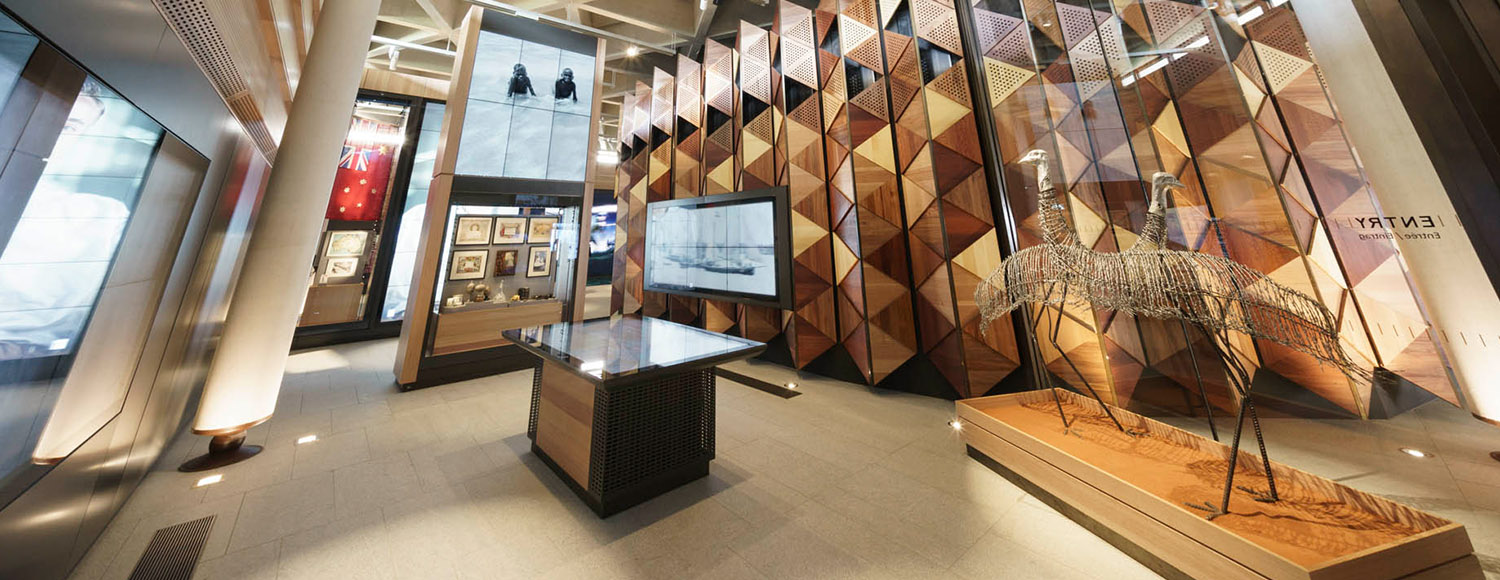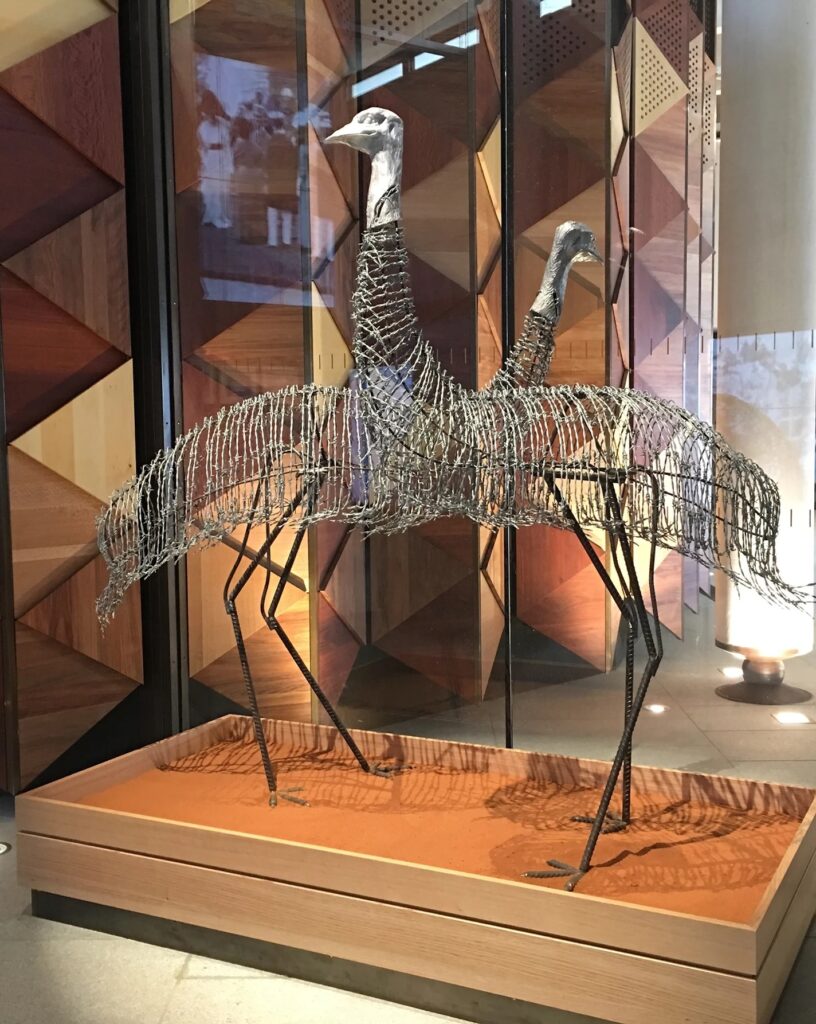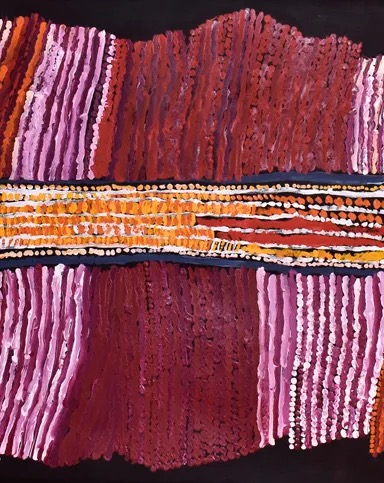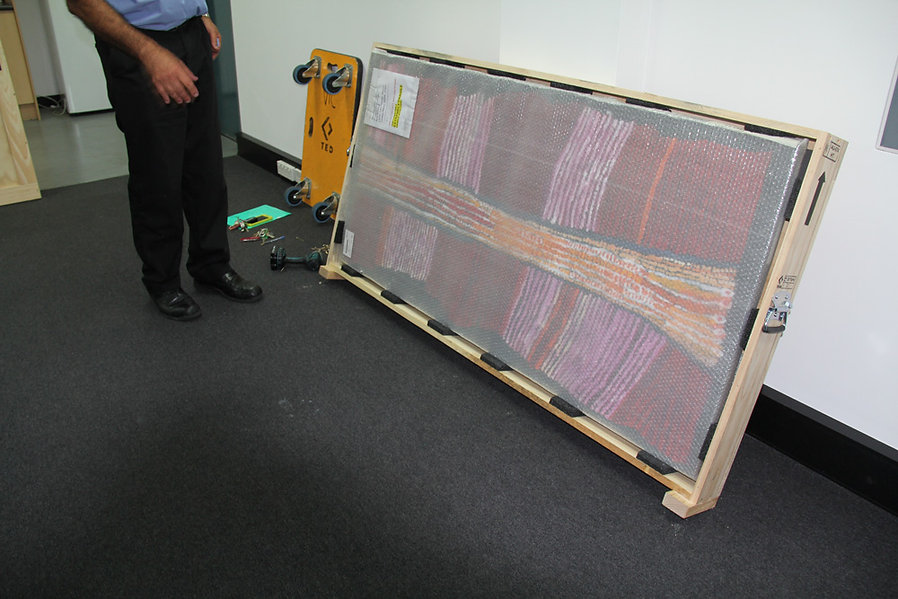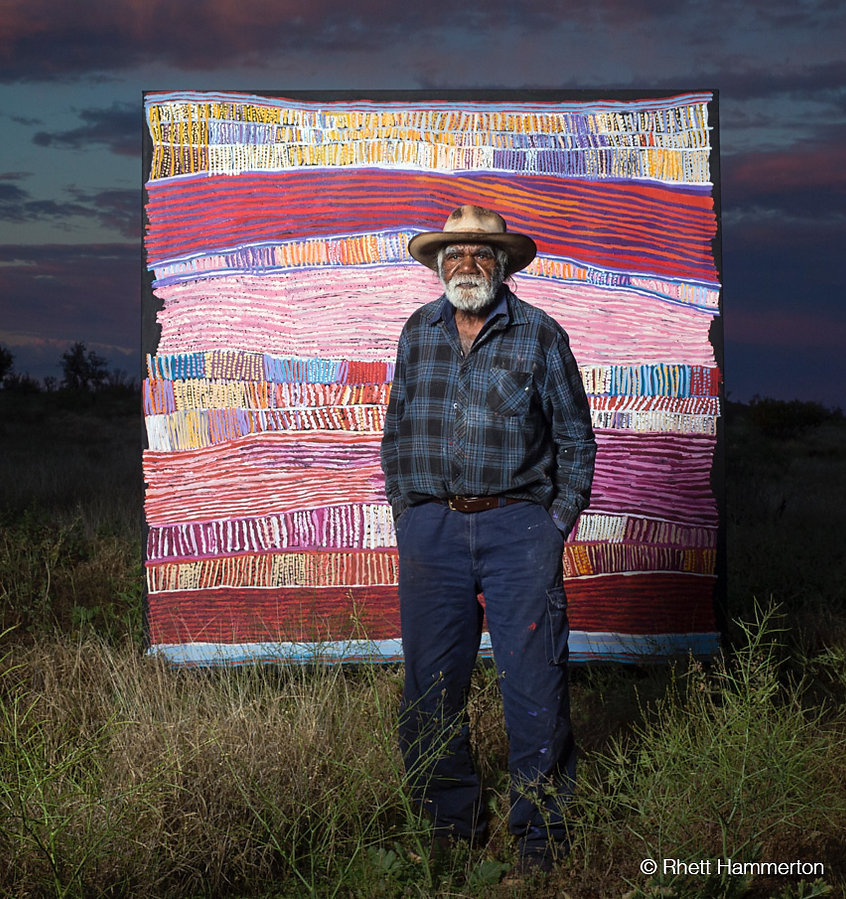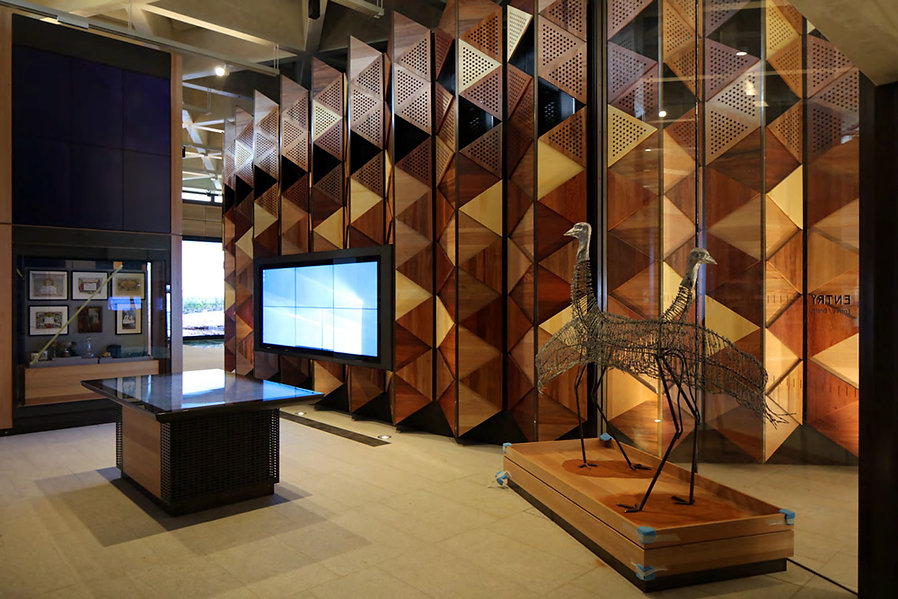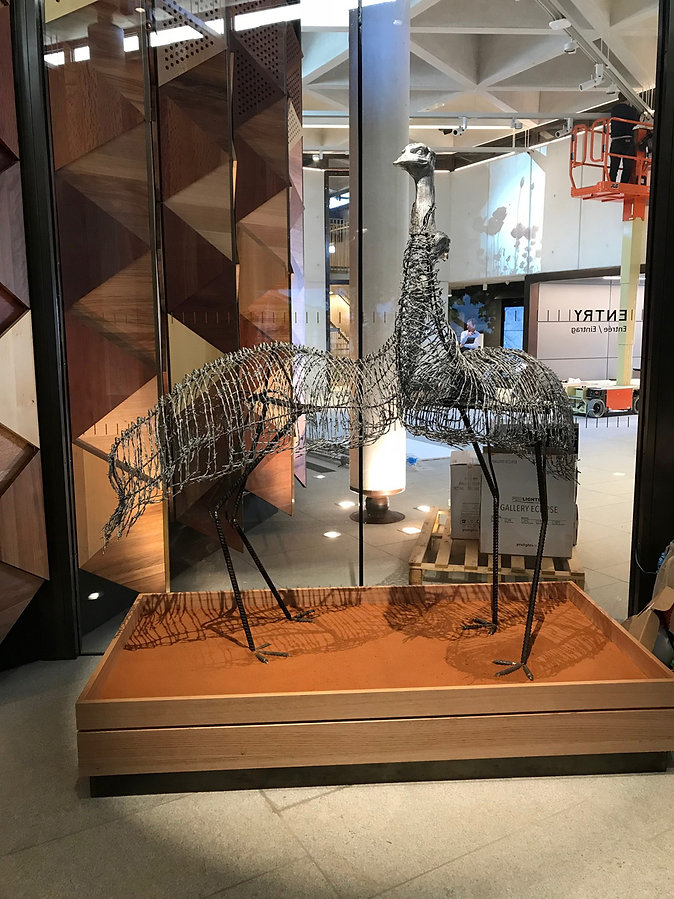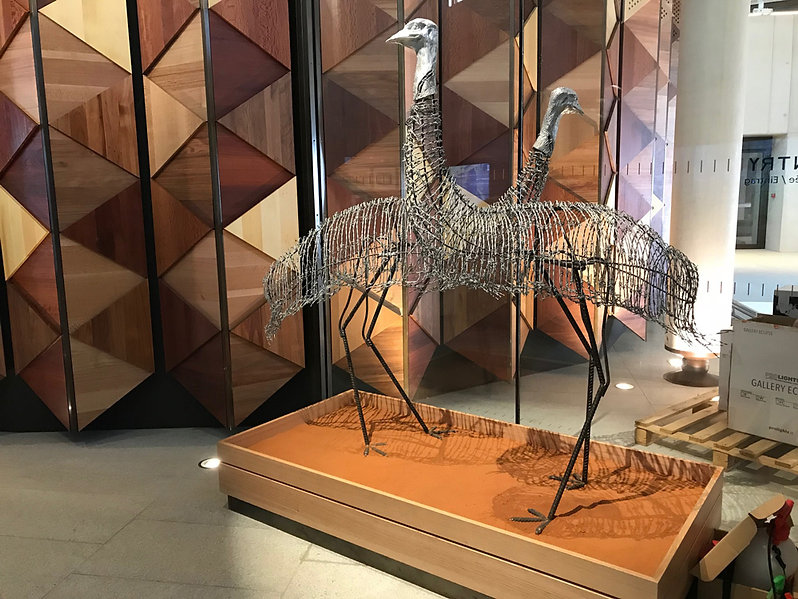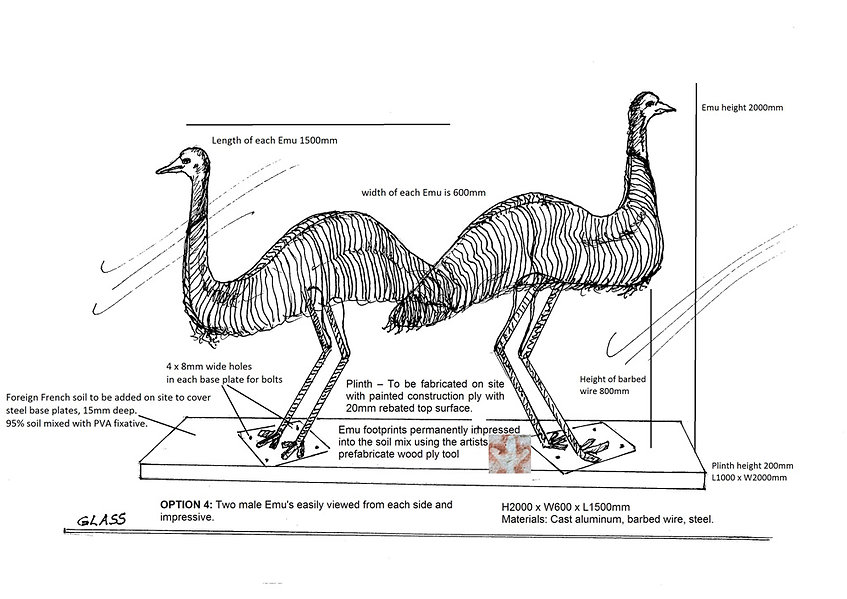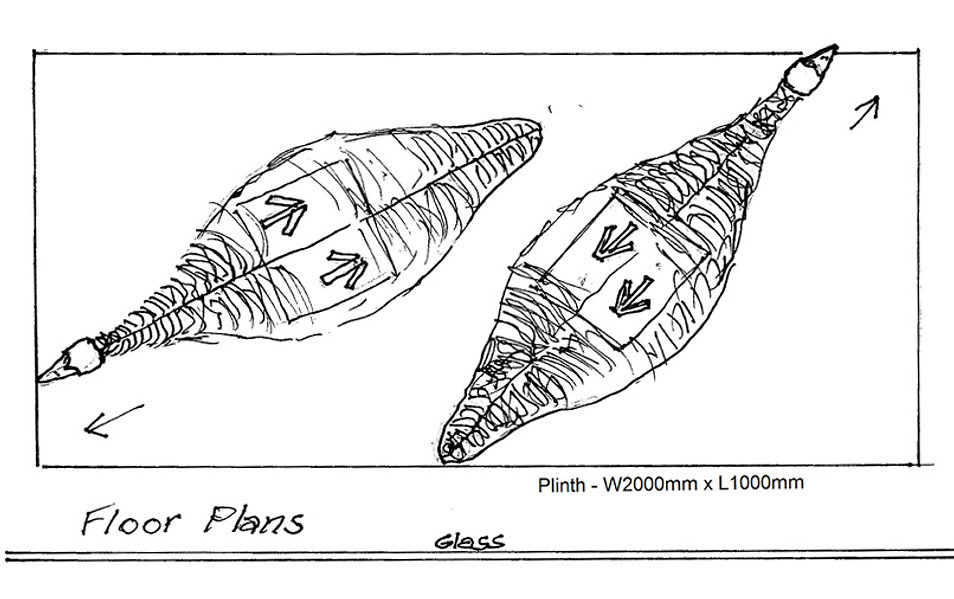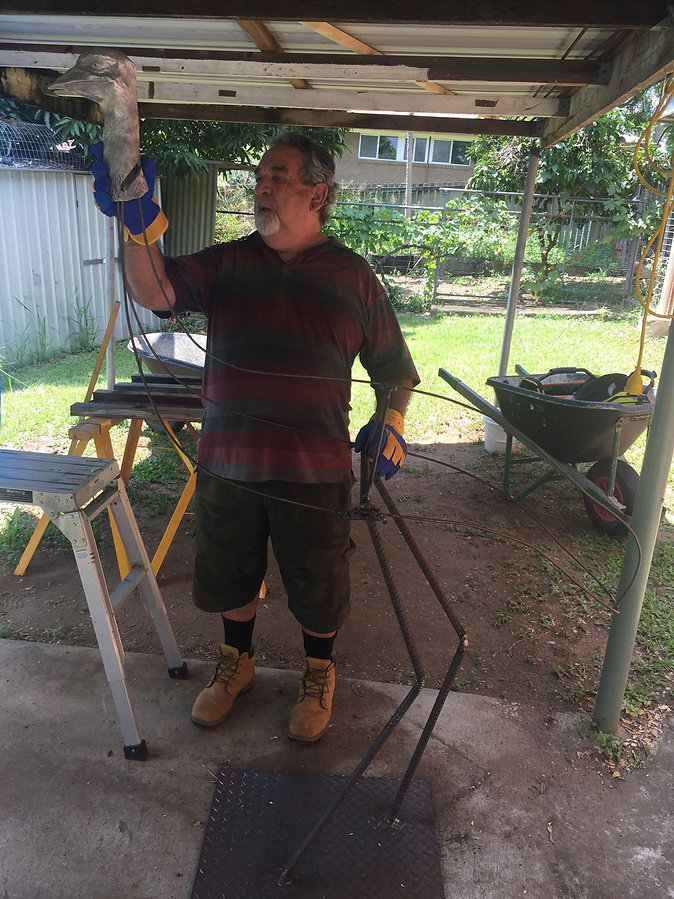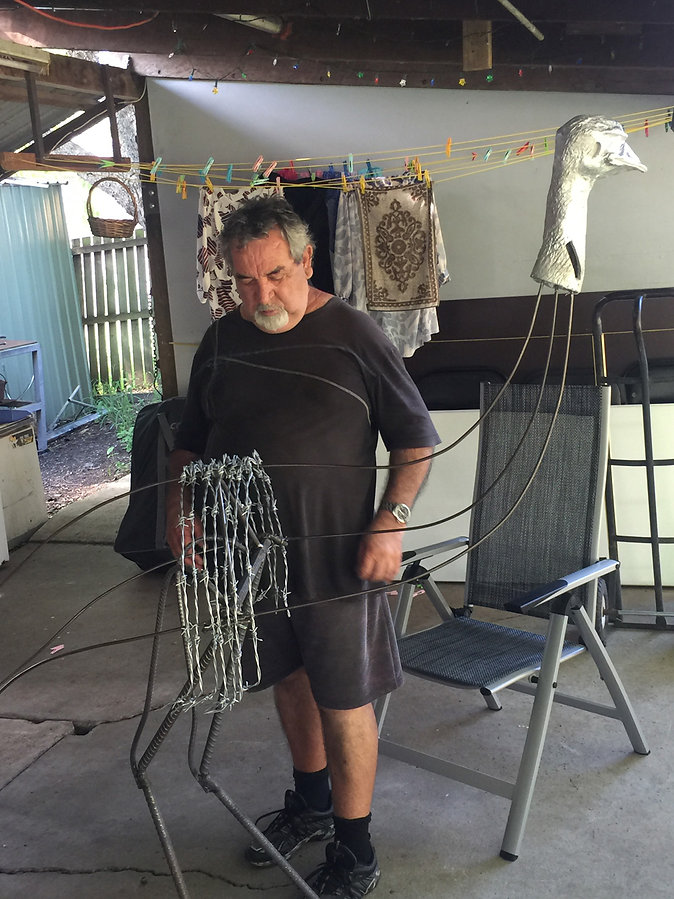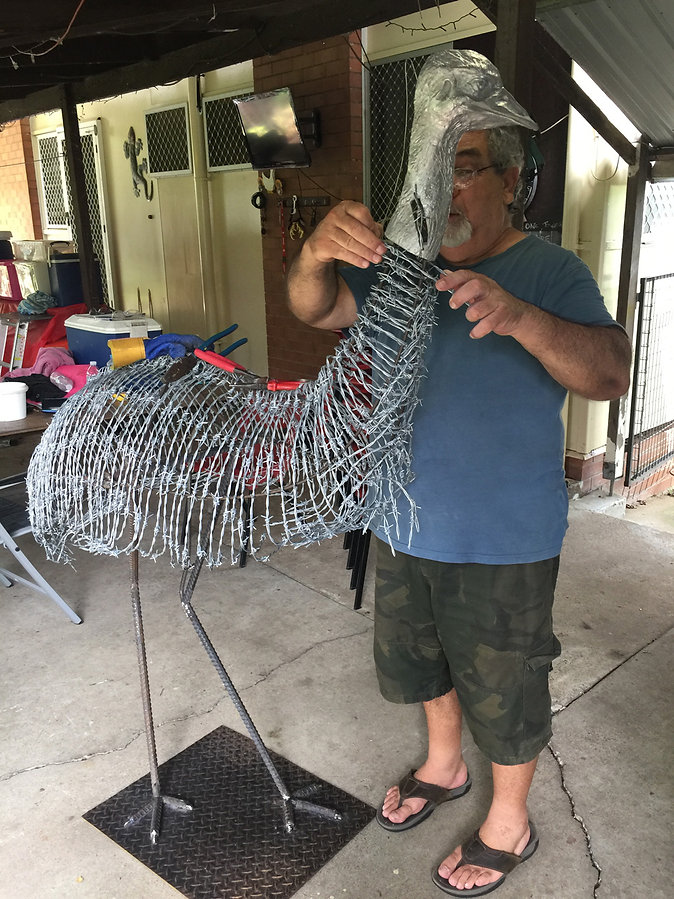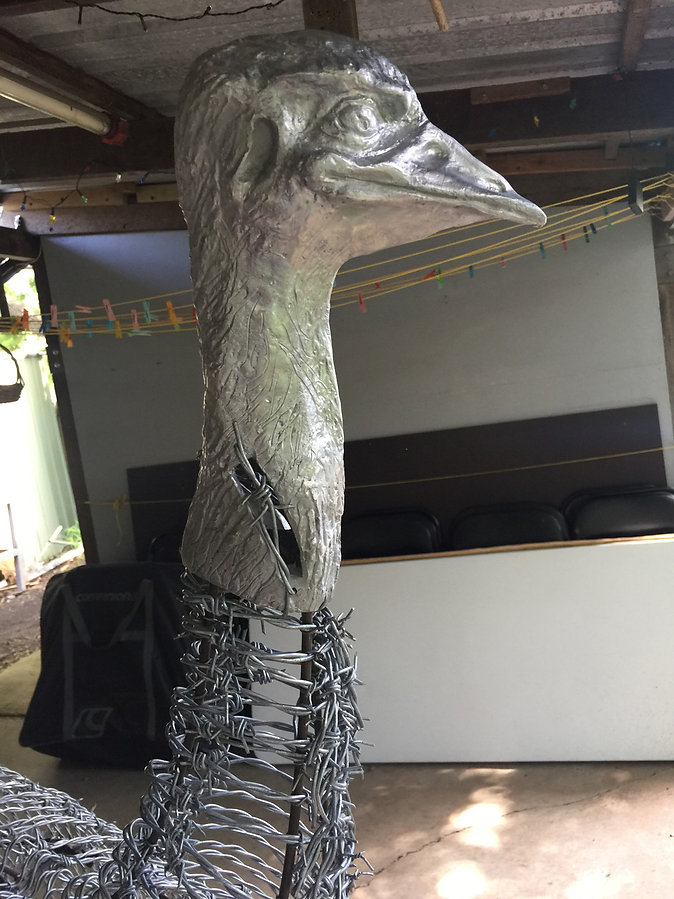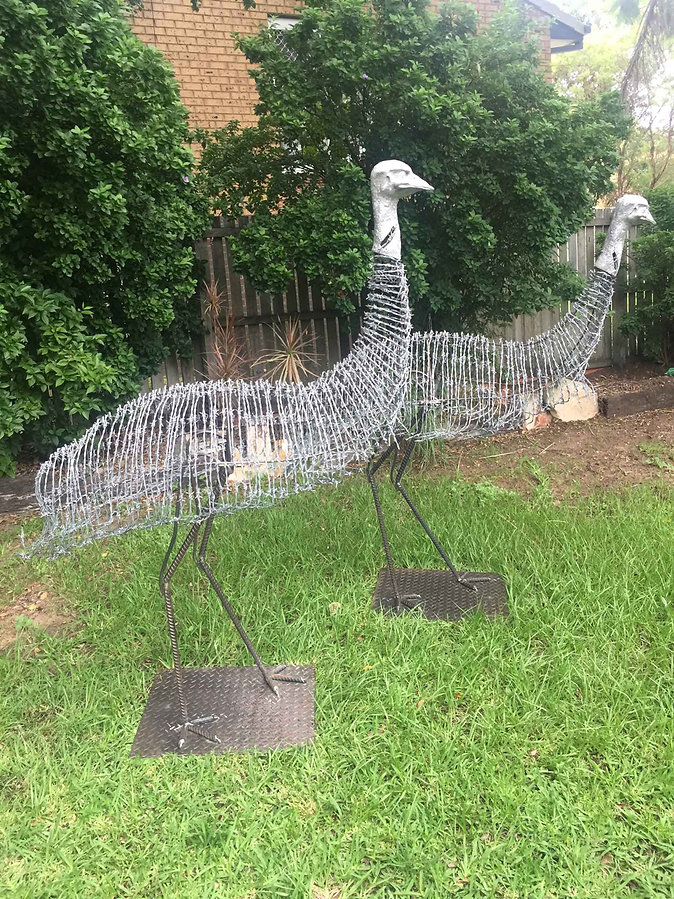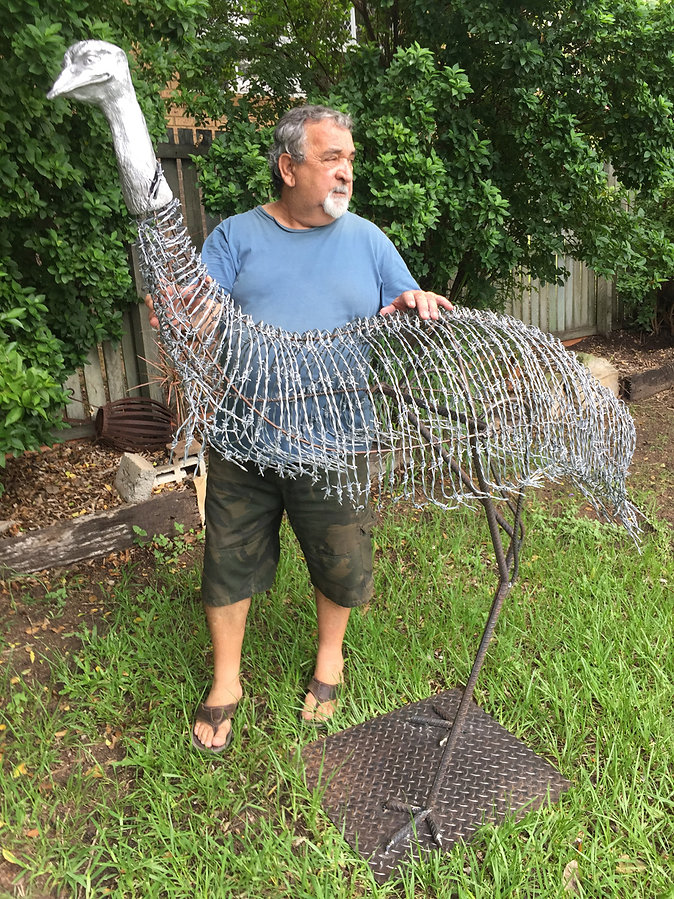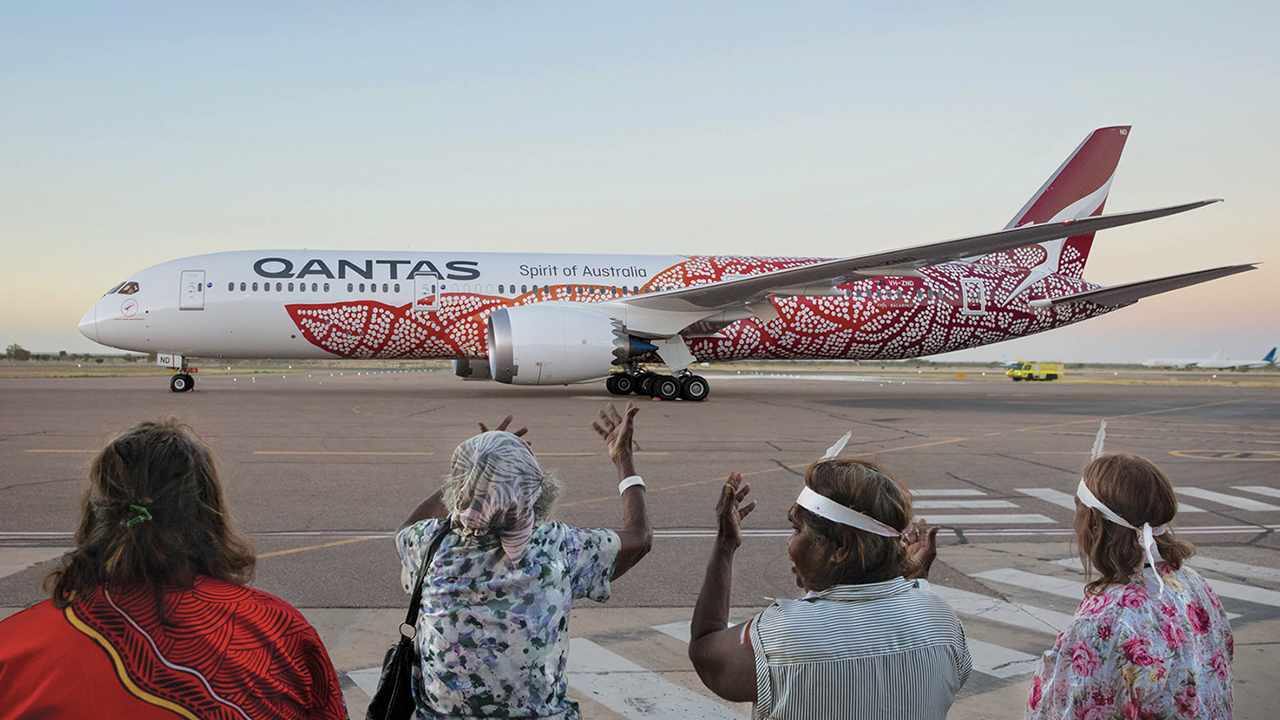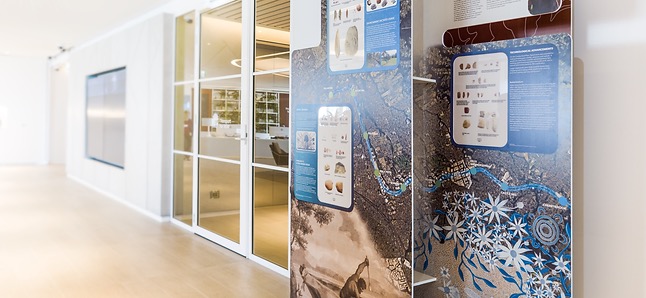The Centre, which opened in the centenary year of the Battle of Villers-Bretonneux on 25 April 2018, honours the more than 295,000 Australians who served on Europe’s Western Front during the First World War.
Laurie Nilsen, a late Manadandanji artist from Queensland, has created a large scale installation entitled ‘Goolburris on Foreign Soil’. Featuring two barbed wire and cast aluminium male Emus, the work represents courageous young male soldiers fighting a war in a foreign country and defending Villers-Bretonneux. The two unique Emus can be viewed both from the foyer through a glass wall, and from within the gallery space.
The Emu is emblematic of Australia and in this work, depicts a proud young nation forging its reputation in a formidable theatre of war on the world stage. It is one of the faunal emblems depicted on Australia’s Coat of Arms, as it is physically unable to move backwards – it is a symbol of a nation moving forward.
Balarinji additionally commissioned a work of art for the Centre’s Boardroom. The painting by the late Anangu Elder Kunmanara (Ray) Ken, entitled ‘Kulata Tjuta (Spears)’ pays tribute to the Australian Aboriginal Soldiers of the First World War.
